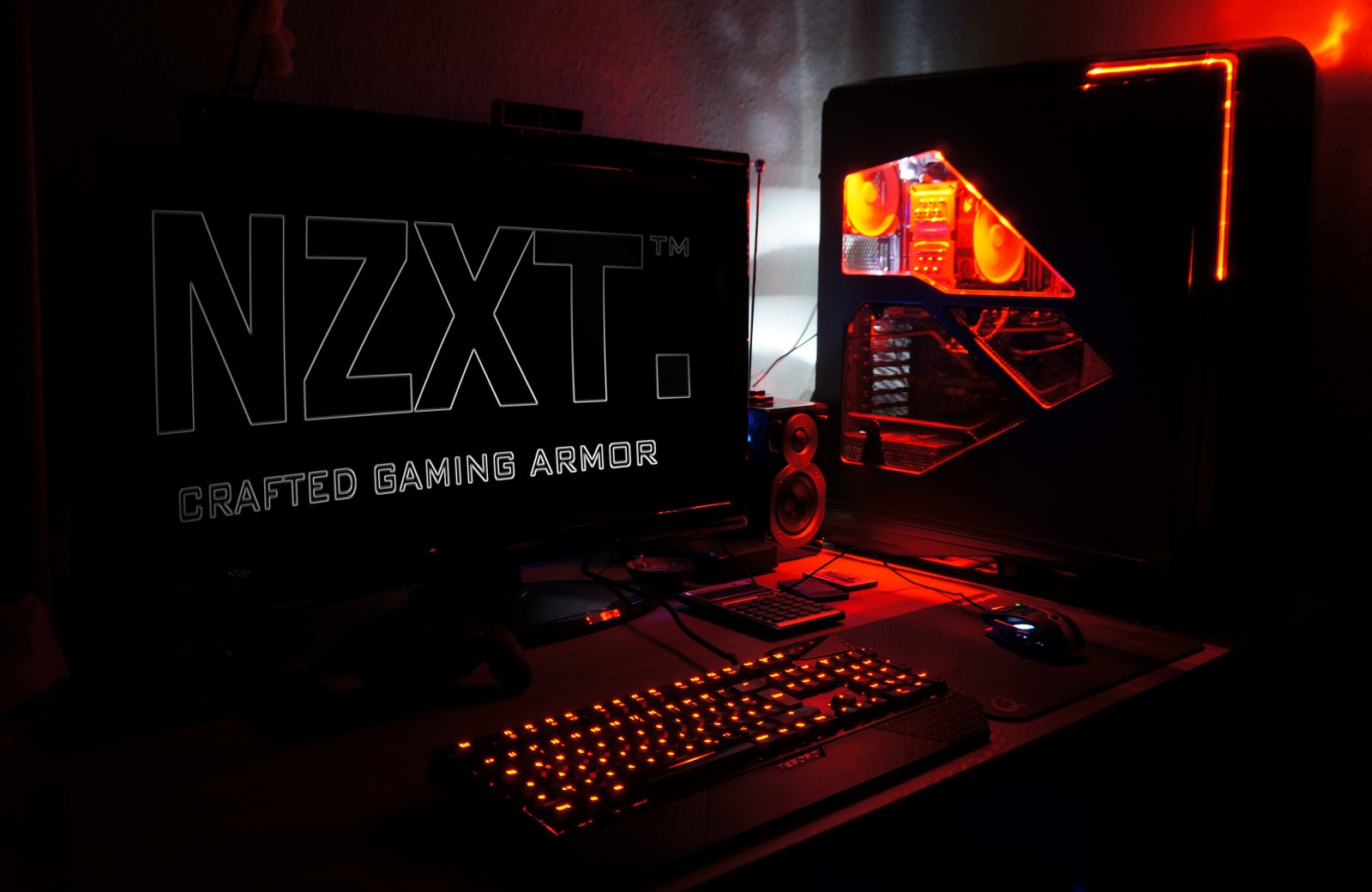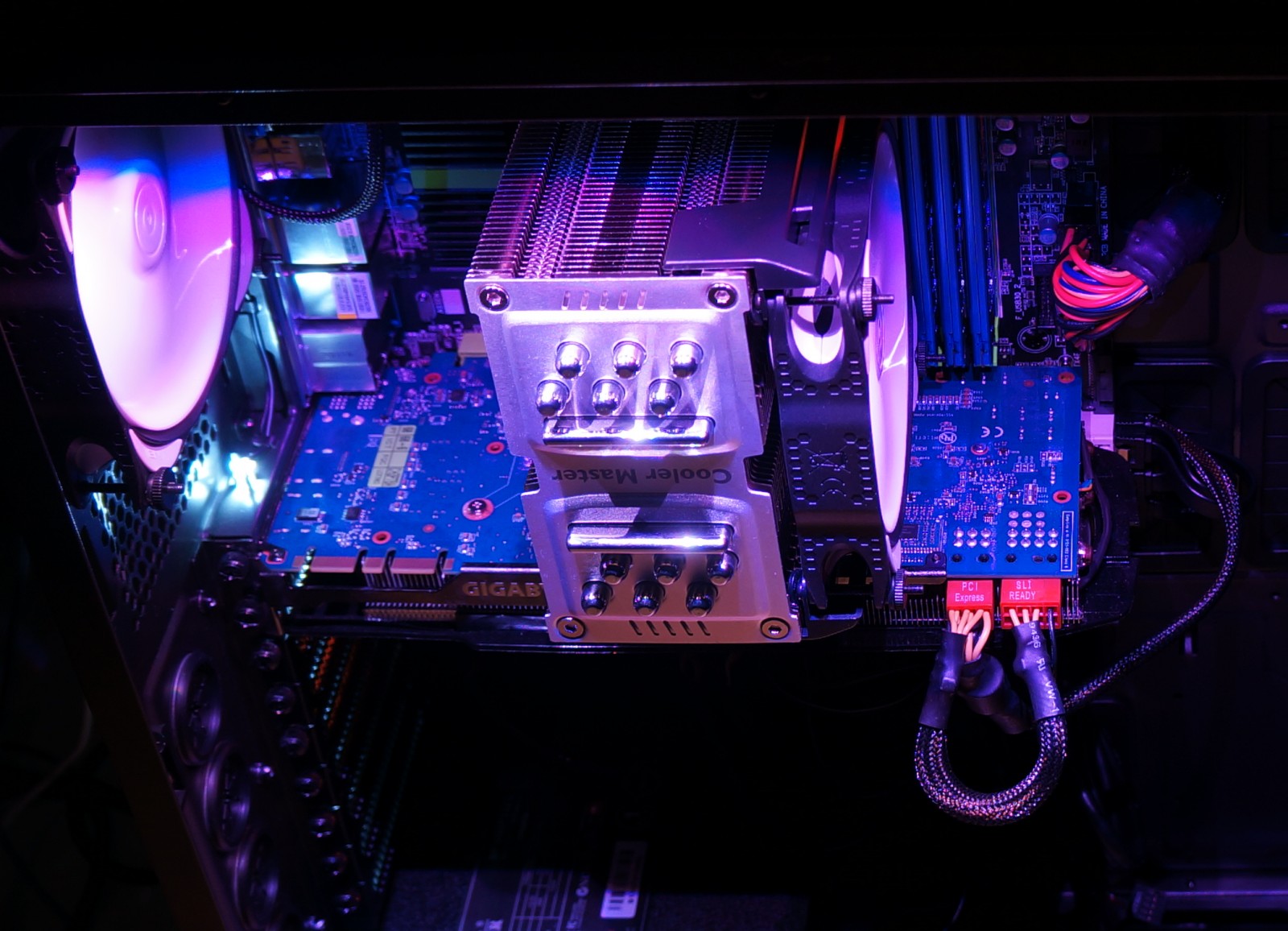NZXT Phantom 820 Case Review: Conceptualized By Enthusiasts
NZXT is extending its portfolio of high-end PC cases with a full-size tower called the Phantom 820. After an extended evaluation, it's clear to us that power users played a big part in defining this enclosure's specs. But the story isn't quite so simple.
NZXT Phantom 820: A Good Case With Some Small Problems
The Phantom 820 represents NZXT's attempt to play in the big leagues, and we'd call it a partial success. Really, this is a nice chassis, but there is a handful of issues that keep us from calling it perfect. And, at the end of the day, there are competing models that do some of what we found wrong with the Phantom better.
This case's good looks, roomy interior, and enthusiast-driven design cues are great. But we have to remember the troubled drive installation process for 2.5" SSDs and 3.5" disks. Fortunately, NZXT says it went back after our review went live in Germany and replaced its bundled M3x5 screws with longer M3x7s. Still, though, drive tray pins that touch the cage result in loud vibration you simply shouldn't have to hear. The company says that issue should be better now that it's using thicker plastic on the trays, but we have no way of knowing for certain. And with many motherboard only giving you two USB 2.0 headers, four USB 2.0 ports and a card reader up front are going to force you to make some decisions. All of that is before we get to the thin and easily-scratched finish, which discourages you from moving this chassis around much.
Pros
- Large tower with lots of space
- Sturdy, thanks to a robust steel frame (passed 100 kg bend test with flying colors)
- High-quality plastics
- Room for particularly long power supplies
- Strategically-placed openings for cable management (lots of them, positioned well, covered with grommets)
- Very good cooling performance with correspondingly-high air flow
- Dust filters in the right places
- Included four-channel fan controller
- Bundled LED lighting with color control
- Illuminated rear I/O panel (thanks to white LED)
- Well-written manual
Cons
- Power supply spacer sticks out too far, complicating installation of some PSUs
- Finish is thin and easy to scratch
- In our sample, problematic hard drive installation with vibration dampening that gets circumvented
- In our sample, SSD screws are too short (purportedly fixed in retail units), and position of installed SSD is inconvenient
- 3.5” drive brackets don’t sit securely in drive bays, and slide back easily
- Fans are too loud
- You may not have enough USB 2.0 headers on your motherboard, requiring the purchase of an extra adapter
- Side wall thumb screws are hard to turn
We're holding back on giving the Phantom 820 a recommendation. The storage issues and noise are just too much for us to overlook at this very high-end price point. NZXT's Phantom 820 is still a very solid case though, and it beats the original Phantom in many ways. Surely, there will be those enthusiasts who are very happy with the company's follow-up effort.
We're happy to hear that NZXT is listening very closely to feedback, and that a couple of the issues originally pointed out in our launch-day evaluation have already been acted on (to the benefit of NZXT's customers, we'd add). The design is sound, attractive, and we love the little extras that show enthusiasts were taken into account. It has the potential to be great. But a couple of less thought-out details and the finish are what let the Phantom 820 down.
Get Tom's Hardware's best news and in-depth reviews, straight to your inbox.
Current page: NZXT Phantom 820: A Good Case With Some Small Problems
Prev Page Temperature And Noise
Igor Wallossek wrote a wide variety of hardware articles for Tom's Hardware, with a strong focus on technical analysis and in-depth reviews. His contributions have spanned a broad spectrum of PC components, including GPUs, CPUs, workstations, and PC builds. His insightful articles provide readers with detailed knowledge to make informed decisions in the ever-evolving tech landscape
-
ilysaml I like most of the cases out there, but the only major drawback is it's side look, some really like a pure glass window and some other just don't.Reply -
where is comparison(Temp Comparison) with other cases like antec df-85,silverstone raven & nzxt tempest etcReply
-
FormatC It can not be directly compared because each hardware component may deliver different results in different cases. I had once a Silverstone Raven myself - VGA cards with DHE works nice, some other cards with axial fans worse. This can't be an objective comparison.Reply -
cobra5000 Funny, I figured the people who write reviews for pc cases would know a little more about what is going on in the pc case world? The 820 is, CLEARLY, a blending of the NZXT Phantom and the Switch 810. The 810 was the first to pioneer the back panel led, not the 820 like the author notes. I was really, really liking this case on paper. It has the sharp looks of the Phantom and all of the great new features of the 810. The $250 price tag killed that! Also, this review makes it pretty clear that this case is really not on par with other cases in this price bracket. Disappointing, to say the least. At almost $100 less and a better fit and finish, get the 810. $150 less gets you a Phantom in any color of the rainbow. NZXT really got greedy on this one. $250 for sub-par fans and flimsy hard drive cages? I think not!Reply -
FormatC @cobra5000:Reply
The intro (and some other content) of my German orginal is different and refers to the Switch 810 (and Phantom). This was my fault as I proofread the translation. Sorry. -
JonnyDough I'm sorry but when I can get THIS: http://www.newegg.com/Product/Product.aspx?Item=N82E16811139011 for quite a lot less and it has USB 3.0, cable management, an adult look to it, and serves my purpose just fine - I see little reason to spend over three times more on a case that does little more than what this one does.Reply -
army_ant7 Hello again Igor! :)Reply
Nice, thorough review, though I was interested in how you guys do your 100Kg tests! I would've also liked to see you (who I assume was referred to as the author) standing or whatever on the case as was mentioned. :lol:
BTW, I'm not much of a chassis buff, but when I saw the Corsair Obsidian 850D I was amazed at its features. It's been my dream case, but I feel a bit half-hearted about that since I am aware that there are as you said, so many cases out there. I'm not sure if you've ever had your hands on it, but if you have, mind sharing your insights and observations of it, and maybe personally compare it to this or other notable cases. Thanks! :D -
FormatC At first:Reply
I'm waiting for the corsair Obsidian 900D. My own case is an Obsidian 800D and I've modified this case with USB 3.0 and a new SATA3 PCB. It will be interesting, what the new case can better (or not).
About the test:
Simply sit down (without the plastic crap on top) and try to sit on it one minute. After this I've used my water venture... I'm a typical 100 kg heavy-weight reviewer and this is really enough to destroy something (some cases were mess after this). -
ckholt83 I hate the stupid looking plastic foot at the front of the case, it looks like a tacked on afterthought.Reply -
army_ant7 Reply
If that's the case, I'll be looking forward to a review of it (900D)! Also yeah, side notes by you on how it does compared to older models. :D9539960 said:At first:
I'm waiting for the corsair Obsidian 900D. My own case is an Obsidian 800D and I've modified this case with USB 3.0 and a new SATA3 PCB. It will be interesting, what the new case can better (or not).
About the test:
Simply sit down (without the plastic crap on top) and try to sit on it one minute. After this I've used my water venture... I'm a typical 100 kg heavy-weight reviewer and this is really enough to destroy something (some cases were mess after this).
Oh, so the two tests are one and the same. Hehe... I see... I hope you haven't gotten into any accidents by doing that with any cases. Ripped up pieces of metal can be nasty...
In your opinion, are Corsair Obsidians (or at least the one you have) the best you've seen? (I value your opinion because I bet you've gone through a lot of cases, or at least reviews of them.) :)

